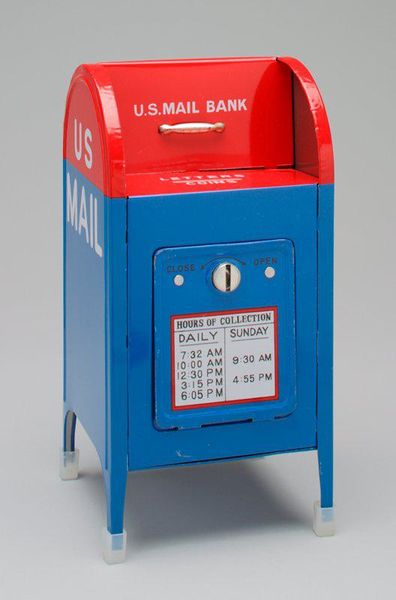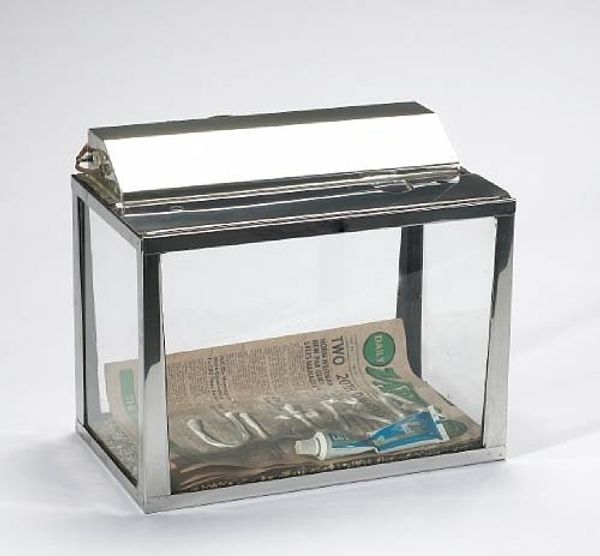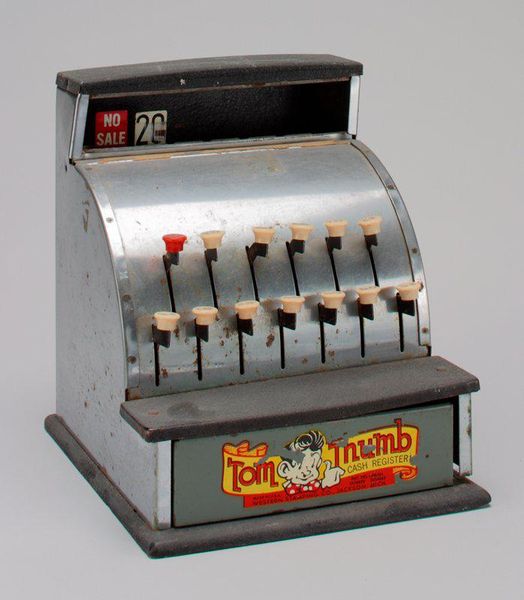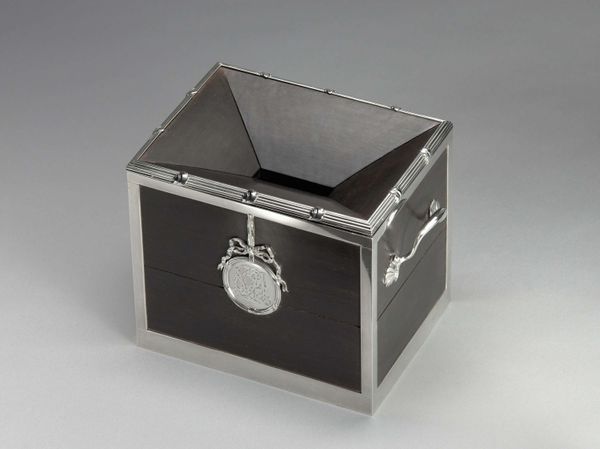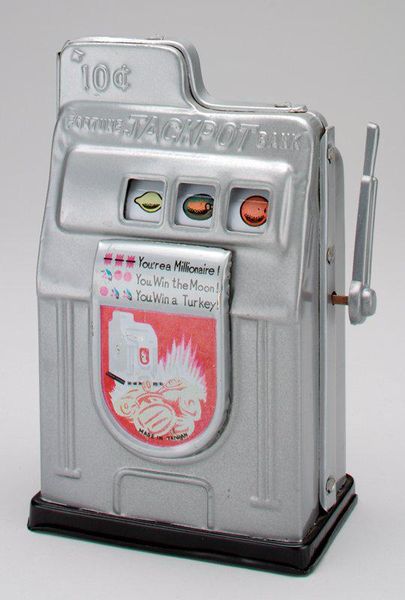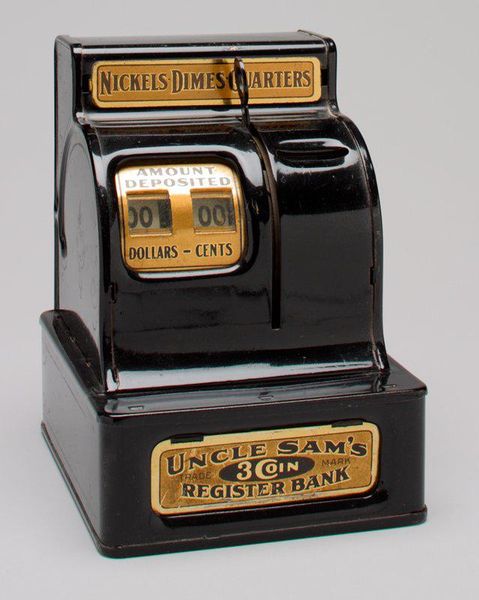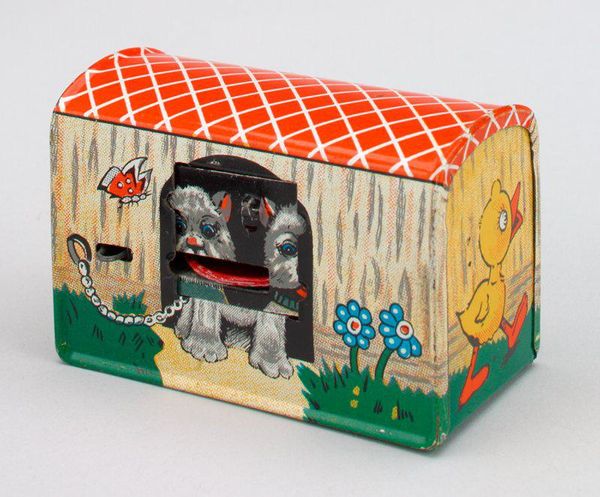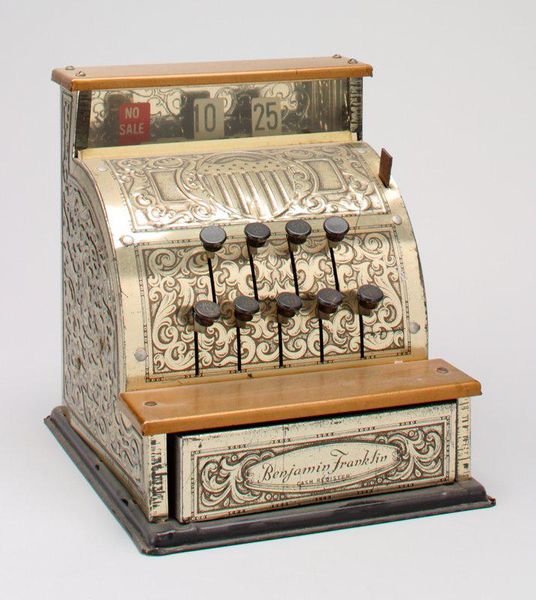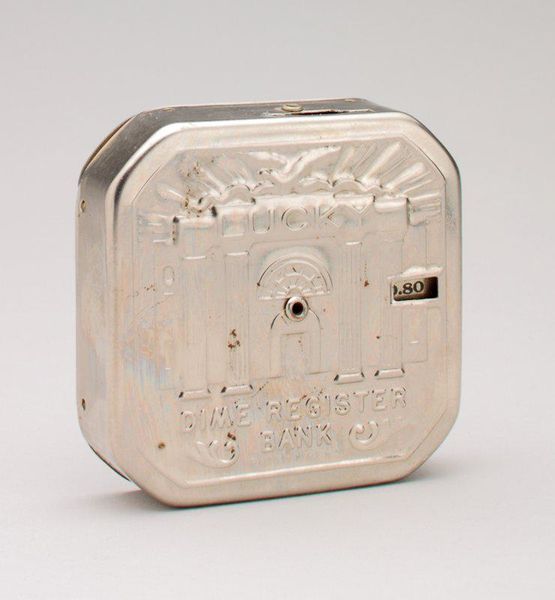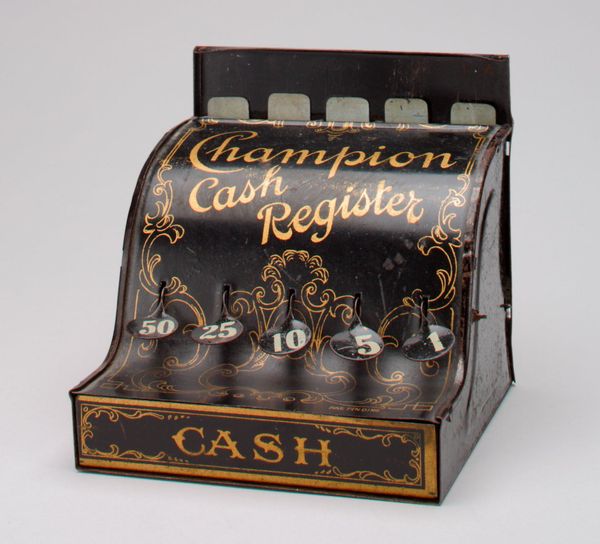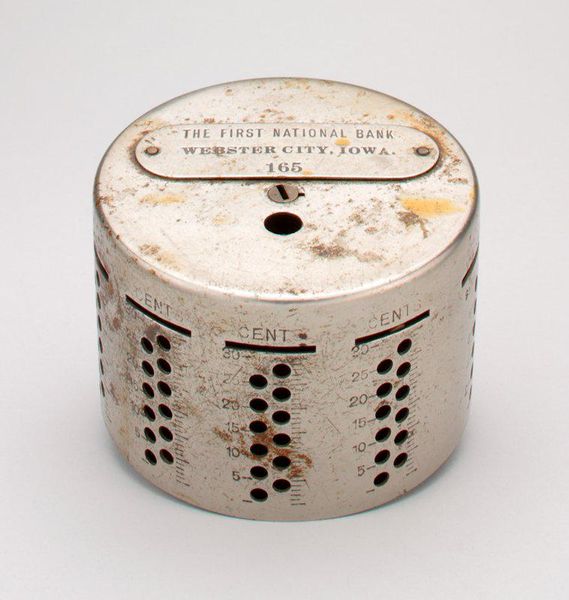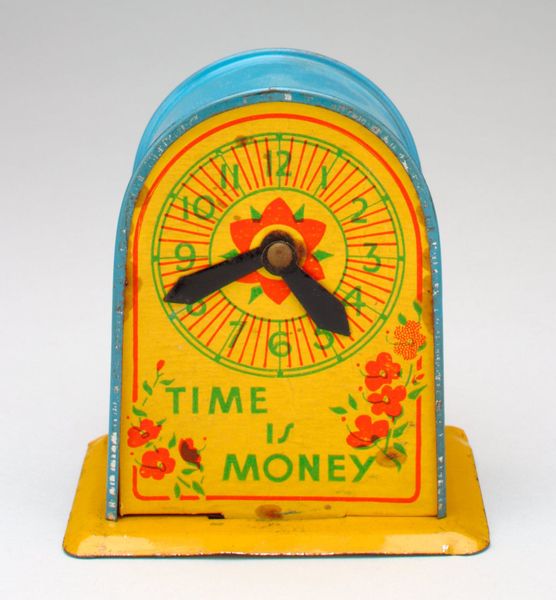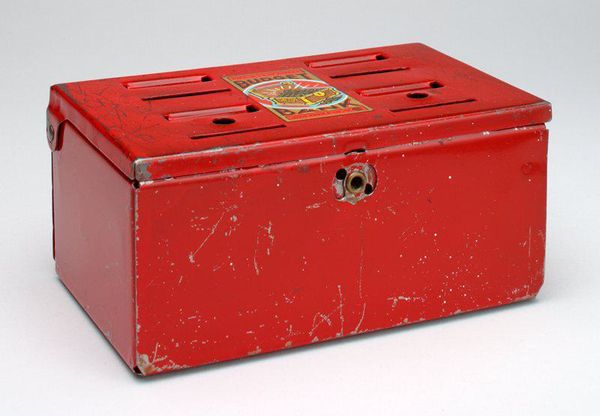
-Dime Register (registering)- still bank c. 20th century
0:00
0:00
assemblage, metal
#
assemblage
#
metal
#
pop-art
#
united-states
#
decorative-art
Dimensions: 2 x 2 1/16 x 2 7/16 in. (5.08 x 5.24 x 6.19 cm)
Copyright: No Known Copyright
Editor: This "Dime Register (registering)- still bank", made of metal, supposedly around the 20th century by J. Chein & Company, reminds me of old-fashioned candy shops. The pop art style, though simple, looks cheerful. What can you tell me about it? Curator: I see in this bank a tangible link to the socio-economic conditions and material culture of its time. This isn't just about design; it's about industrial processes, accessible materials, and mass production. The use of metal reflects a period when metal stamping became a common manufacturing method, influencing the cost and accessibility of everyday objects, even toys. Editor: So it’s not just a toy? Curator: Not just a toy, no. The construction—stamped metal, simple mechanics—speak to the prevailing production techniques and labor practices of the period. Decorative art like this served to instruct about thrift, banking, and eventually social discipline in a world rapidly transforming with the industrial revolution. Editor: How would the intended user interact with it? I mean, it "registers ten dollars"... what does it *mean* to register that amount? Curator: I see these tinplate objects as key to examining the intersection of consumption, materiality, and childhood experiences. Consider the sensory experience: the feel of the metal, the sound of the coins dropping, the visual appeal of the design. How would a child internalize values around money through such interactions? Editor: It really gives us a glimpse into past lives, not just of those who owned it, but also those who manufactured it! It bridges material, design, and society in a very interesting way. Thanks! Curator: Exactly! Examining it through its materiality and context illuminates a richer history than just aesthetics. Food for thought.
Comments
No comments
Be the first to comment and join the conversation on the ultimate creative platform.
